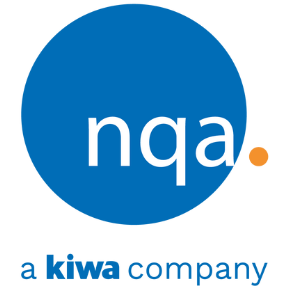ISO 55001: Asset Management
What is ISO 55001?
Assets come in all shapes and sizes, but one thing is for certain all organisations have assets. Assets can be a competitive advantage or can drain your organisation’s resources. That’s why it is important to manage your assets effectively and achieving ISO 55001 certification can do just that. ISO 55001 is especially relevant in industries that are capital intensive, have significant physical assets to manage and have high fixed costs. This can include utilities, heavy and light manufacturing, distribution, construction, property management and transportation.
ISO 55001:2024 was published in July 2024 and replaces the previous 2014 version of the standard.
The standard establishes specific requirements for not only implementing and maintaining an asset, but also improving that asset via an Asset management system. It builds upon PAS55 which had a proven track record specifically in the utilities industries. ISO 55001 aims to apply this approach across other sectors allowing all businesses to benefit from it.
It is designed to provide structure and guidance to an Asset Management System (AMS) to manage and mitigate risk, whilst benchmarking performance across all sectors and improving financial performance in line with organisational growth strategies.
What are the basic updates within the 2024 version?:
-
You'll find the application of the Harmonized Structure for Management System Standards, which includes the incorporation of the common core management system terminological entries in Clause 3.
-
There is the inclusion of new/additional subclauses dealing with asset management decision-making, the strategic asset management plan and knowledge
-
The new standard has been changed to make clear that operational planning and control includes life cycle management
-
You'll see a new and clear distinction between how an organisation shall address 'risk' and how it shall address 'opportunities'
-
The subclause 'preventive action' has been renamed to 'predictive action' and includes a full technical revision of the content of this subclause
- A stronger emphasis has been placed on leadership and its role in supporting the enablement and success of the asset management system
We are working on a Gap Guide and Gap Analysis tool to help you with the transition between the 2014 and 2024 versions. They will appear in a toolkit at the bottom of the page shortly.
Helps you with
-
Improved financial performance
-
Competent asset investment decisions
-
Effective integrated risk management
-
Improved resilience and reliability
-
Improved services and outputs
-
Demonstrated social responsibility
-
Demonstrated regulatory compliance
-
Enhanced reputation
-
Improved customer and stakeholder satisfaction
-
Improved organisational sustainability
-
Improved efficiency and effectiveness
Benefits of Gaining Certification
Win more business
Procurement specifications often require certification as a condition to supply, so certification and verification opens doors.
Customer satisfaction
Deliver products that consistently meet customer requirements and a service that is dependable and can be relied on.
Improved stakeholder relationships
Improve the perception of your organization with staff, customers and suppliers.
Legal compliance
Understand how statutory and regulatory requirements impact your organisation and its customers.
Proven business credentials
Independent verification against a globally recognised industry standard speaks volumes.
Reduced operating costs
Continual improvement of processes and resulting operational efficiencies mean money saved.
Improved risk management
Greater consistency and traceability of products and services means problems are easier to avoid and rectify.
Other potential benefits of ISO 55001 certification
-
Effective management of value, risk and reliability
Good governance, and a good understanding and control of assets, can improve stakeholder confidence (e.g. customers and regulators acting on behalf of customers) and result in lower insurance premiums -
Seamless integration of AMS into Integrated Management Systems
Current HSE, Security, Information Security, Quality, Environment and Business Continuity Programs require current knowledge of assets and effective management of assets and related risks. The introduction of a comprehensive AMS into the integrated management systems adds significant value to the overall Risk and Business Management Model of the organization. -
Standardise and simplify
Asset management allows large organizations to standardize and simplify plants and equipment, reducing costs for spares and supplies, as well as training and support. The optimized asset management programmes assure maximizing the value and taking advantage of the opportunities for growth. -
Personal and process safety
Effective asset management improves both personal and process safety, reducing the risk of injury and catastrophic events. The proactive risk management and operational management of assets, assures minimising the probability of incidents and accidents. -
Image and reputation
Assets contribute to the reputation and image of the organisation, just as they contribute to its operation. Assets are often the front door to the enterprise, such as in hospitality and retail, and improved design contributes directly to increased visits.
How NQA can help you
With a wealth of experience providing accredited management systems certifications, NQA is ideally placed to partner with you to meet stakeholder requirements and exceed industry expectations.
Technical committees and industry relationships. NQA is highly involved in a wide variety of industry committees and standards writing teams, helping us to maintain a keen awareness of changes within the industry.
Knowledge transfer supporting our customer’s organisational strategy. NQA is committed to ensuring customer awareness regarding changes in industry strategy, regulations, and standard requirements that may impact your management system approach.
If you are interested in understanding how NQA can assist you in gaining UKAS accredited certification against ISO 55001 please contact our Business Development Advisors.
Please note: The standard also focuses on the benefits of cross-functional collaboration and links to ISO 44001 - Collaborative Business Relationships.
Steps to Certification
-
Step 1
Complete a Quote Request Form so we can understand you and your business. We will then use this to personally prepare a proposal for your certification and define what is known as your 'scope of assessment'.
-
Step 2
We will then contact you to book your assessment with an NQA assessor. It consists of two mandatory visits that form the Initial Certification Audit. Please note that you must be able to demonstrate that your management system has been operational for a minimum of three months and has been subject to a management review and a full cycle of internal audits.
-
Step 3
Following a successful stage two audit, a decision is made. If positive, your certification will be issued by NQA, with both a hard and soft copy of the certificate awarded. Certification is valid for three years and maintained through surveillance audits (years one and two) and a recertification audit in year three.



